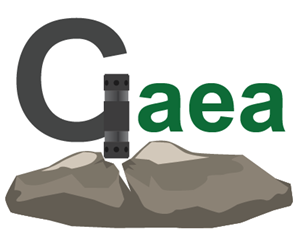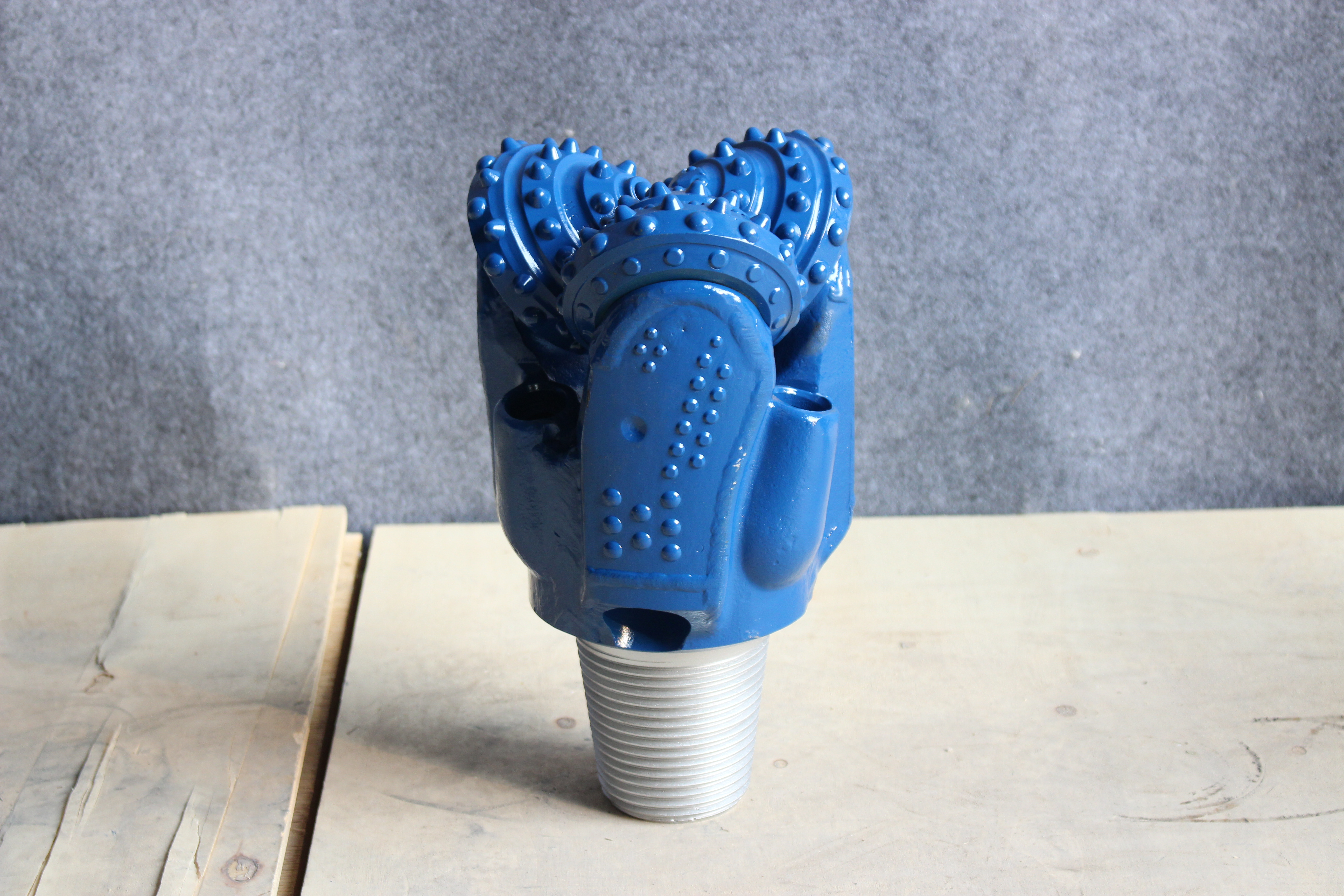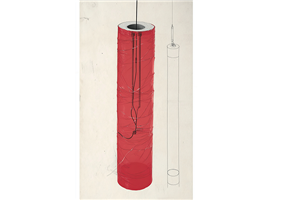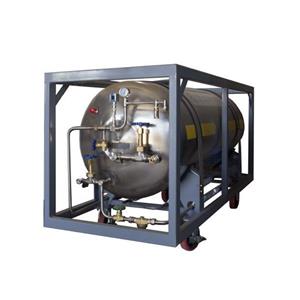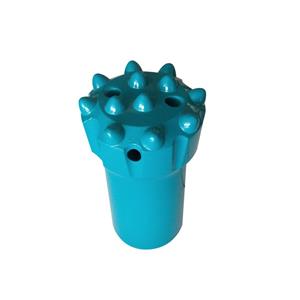Types and functions of tricone drill bits
Related products Link:
1 scraper bit
The structure of the scraper bit can be divided into four parts: the upper bit body, the lower bit body, the blade and the water eye.
The upper bit body is located on the upper part of the bit. The upper part is provided with a threaded button for connecting the drill string, and the side bread is provided with a slot for welding blades. Generally made of alloy steel.
The lower bit body is welded to the lower part of the upper bit body, and three water eye holes are opened inward to install nozzles. It is made of alloy steel.
The blade, also known as the scraper blade, is the working edge of the scraper bit that directly contacts the rock and breaks the rock. Scraper bits are named after the number of blades. For example, three blades are called three blade bits, and two blades are called two blade bits or fishtail blade bits. Three scraper drill bits are commonly used at present.
2 tricone bit
(1) The structure of roller cone bit(tricone bits)
The commonly used cone bit is a tri-cone bit. The upper part of the drill bit has a threaded buckle for connection with the drill string; the claw (also known as the palm) is connected to the shell, and the lower is with a cone shaft (journal); the cone is mounted on the cone shaft, and the cone has teeth for Broken rock; there is a bearing between each cone and the cone shaft. The water eye (nozzle) is the channel of the drilling fluid; the oil storage seal compensation system stores and replenishes the lubricating grease in the bearing cavity, while preventing the drilling fluid from entering the bearing cavity and preventing the loss of grease.
(2) Selection of roller bit(tricone bits)
The cone bit is the most widely used bit. The main reason is to change different bit design parameters (including tooth height, tooth pitch, tooth width, shifting wheel distance, cone arrangement, etc.) to adapt to the needs of different formations.
Principles of roller cone bit selection and issues to be considered:
①The degree of hardness and abrasiveness of the stratum. The lithology and hardness of the stratum are different, and the requirements for the drill bit and the breaking mechanism are also different. For soft formations, three types of structures, including shifting, super-top, and compound cone, should be selected for soft formations. Milling or inserting bits with larger, sharper teeth and fewer teeth should be selected to give full play to the shearing and breaking effects of the bit; With the increase of rock hardness, the above three structure values of the selected drill bit should be correspondingly reduced, and the teeth should also be shortened and dense.
Abrasive stratum will wear teeth too quickly, the speed of drilling will decrease rapidly, the drill bit has a small footage, and it is particularly easy to wear the gauge teeth, back cones and the palm tip of the tooth palm. The bearing is exposed and the bearing seal fails, which accelerates the damage of the drill bit. Therefore, to drill abrasive formations, insert drill bits with diameter teeth should be used.
②The depth of the drilling section. The rock in the shallow section is generally soft, and the time required for tripping is relatively short. A drill bit that can obtain a higher ROP should be selected; the formation in the deep section is generally hard and the tripping time is longer, so a higher total footage should be selected. Of drill bits.
③Easily inclined strata. When drilling in easily deviated formations, the formation factors are the objective factors that cause the well deviation, while the bending of the lower drill string and the improper selection of the drill bit are the technical factors that cause the well deviation. For drilling in easily deviated formations, a non-shifting or small shifting drill bit should be used; at the same time, under the premise of ensuring a small shifting axis, the selected drill bit should adapt to the formation slightly softer than the drilled formation, so that it can be used in Increase the ROP at a lower WOB.
④The staggered formation of soft and hard. When drilling in hard and soft formations, the type of drill bit should generally be selected according to the harder rock, so that it has a higher ROP in soft formations and can smoothly penetrate hard formations. Drilling parameters should be adjusted in time during the drilling process. When drilling in soft formations, the WOB can be appropriately reduced and the speed can be increased; when drilling in hard formations, the WOB can be appropriately increased and the speed can be reduced.
3Diamond material drill bit
(1) Diamond material drill bit structure
The diamond drill bit is an integrated drill bit. The whole drill bit has no moving parts. It mainly includes the bit body, crown, hydraulic structure (including water eye or nozzle, flume also known as runner, chip flute), gauge, cutting edge (tooth) Five parts.
The crown of the drill bit is the working part of the drill bit for cutting rock. Its surface is inlaid with diamond material cutting teeth and is arranged with a hydraulic structure. Made of tungsten carcass or steel material.
The bit body is a steel body, the upper part is threaded, and is connected with the drill string; the lower part is sintered with the crown matrix (the steel crown is integrated with the bit body).
The hydraulic structure of diamond drill bits is divided into two categories. One type is used for natural diamond drill bits and TSP drill bits. The drilling fluid of this type of drill bit flows out from the central water hole, and is dispersed through the surface of the drill bit to the working surface of the drill bit to cool, clean, and lubricate the cutting teeth, and finally carry the cuttings from the side water groove and The chip flute flows into the annular space. The other type is used for PDC drill bits. The drilling fluid of this type of drill bit flows out from the water hole, and is distributed to various parts of the drill bit working surface to cool, clean and lubricate the cutting teeth through various diversion elements. The position and number of water holes of the PDC bit are determined by the bit structure.
(2) Diamond drill bit selection
The amount of diamond material drill bits is much lower than that of roller cone bits, mainly because the diamond material drill bits have poor adaptability to the formation, but when the formation and other conditions are suitable for diamond material drill bits, high use efficiency can be achieved; otherwise, it is not. Therefore, the selection of diamond drill bits is particularly important.
Compared with roller cone bits, diamond drill bits have the following characteristics:
①Diamond drill bit is an integral drill bit. It has no movable parts like roller cone bits, and no structural weaknesses. Therefore, it can use high speed and is suitable for use with high-speed downhole power drilling tools to achieve high benefits. ; In the process of directional drilling, it can withstand large lateral loads without downhole accidents, and is suitable for directional drilling;
②Diamond material drill bits are wear-resistant and have long service life when used correctly, and are suitable for deep wells and abrasive formations;
③In the case of high ground temperature, the bearing seal of the roller cone bit is easy to fail, and this problem will not occur when the diamond material bit is used;
④During borehole drilling smaller than 165.1mm, the bearing of roller cone bit is affected by space size limitation, so the strength is affected and performance cannot be guaranteed. Diamond material bit will not cause problems. Therefore, diamond material bit should be used for slim hole drilling. ;
⑤ The drilling pressure of diamond material drill bits is lower than that of roller cone bits, so diamond material drill bits should be used when the drilling pressure is restricted (such as anti-offset drilling);
⑥The structure design and manufacture of diamond material drill bits are relatively flexible, and the production equipment is simple, so it can meet the drilling needs of non-standard special-shaped wells;
⑦The PDC drill bit in the diamond material drill bit is a cutting type drill bit. The cutting teeth have the advantage of self-sharpening. There is no pressing effect of the cone bit when crushing the rock. The cutting area of the cutting teeth is large when cutting, and it is a high-efficiency drill. Practice has shown that this kind of drill bit can achieve high benefits when adapting to the formation;
⑧Due to the limitation of thermal stability of diamond material drill bits, sufficient cleaning and cooling must be ensured when working;
⑨Diamond material drill bit has poor impact resistance and load performance, so strict regulations must be followed when using it;
⑩The price of diamond material drill bit is higher.
